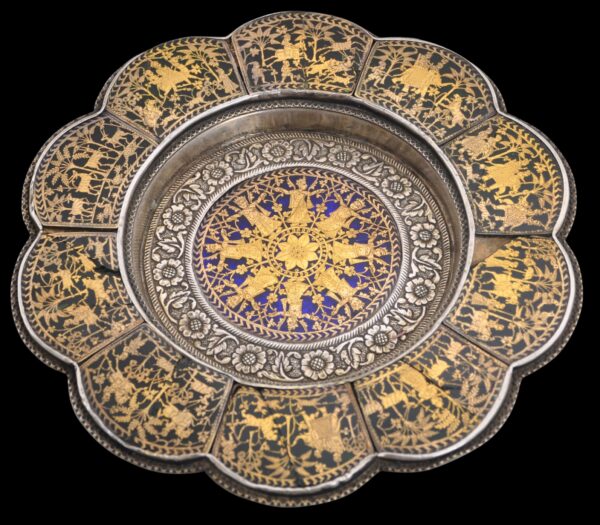This silver tray or plate in flower form with a petalled rim, has been inset with ten theva work grass plaques backed with green foil around its rim, and one unusually large theva work roundel backed with blue foil in the plate’s centre.
The interior is also decorated with a silver border chased with a flower and leaf pattern.
The body of the plate comprises high-grade silver. The plate sits on three solid-cast zoomorphic feet.
Theva work (theva in Rajasthani means ‘setting’) was undertaken by Raj Soni goldsmiths from Partabargh in Rajasthan. The technique is believed to have been developed in the 1760s. The technique involves incising and then cutting out small scenes and images from thin, 24-carat gold. This was then fused onto glass behind which usually green foil was attached. The whole was then held in place by silver wire.
Typically theva wear shows village scenes or Hindu deities. This plate here shows hunting scenes on elephant and horse back and deities.
In terms of condition, five of the theva panels are cracked and one has a corner missing. On the plus side, the form of the tray or plate is unusual, as is the mixing of theva work with silver chasing, and the use of both blue and green foil.
References
Sharma, R.D. & M. Varadarajan, Handcrafted Indian Enamel Jewellery, Roli Books, 2004.
Untracht, O., Traditional Jewelry of India, Thames & Hudson, 1997.








